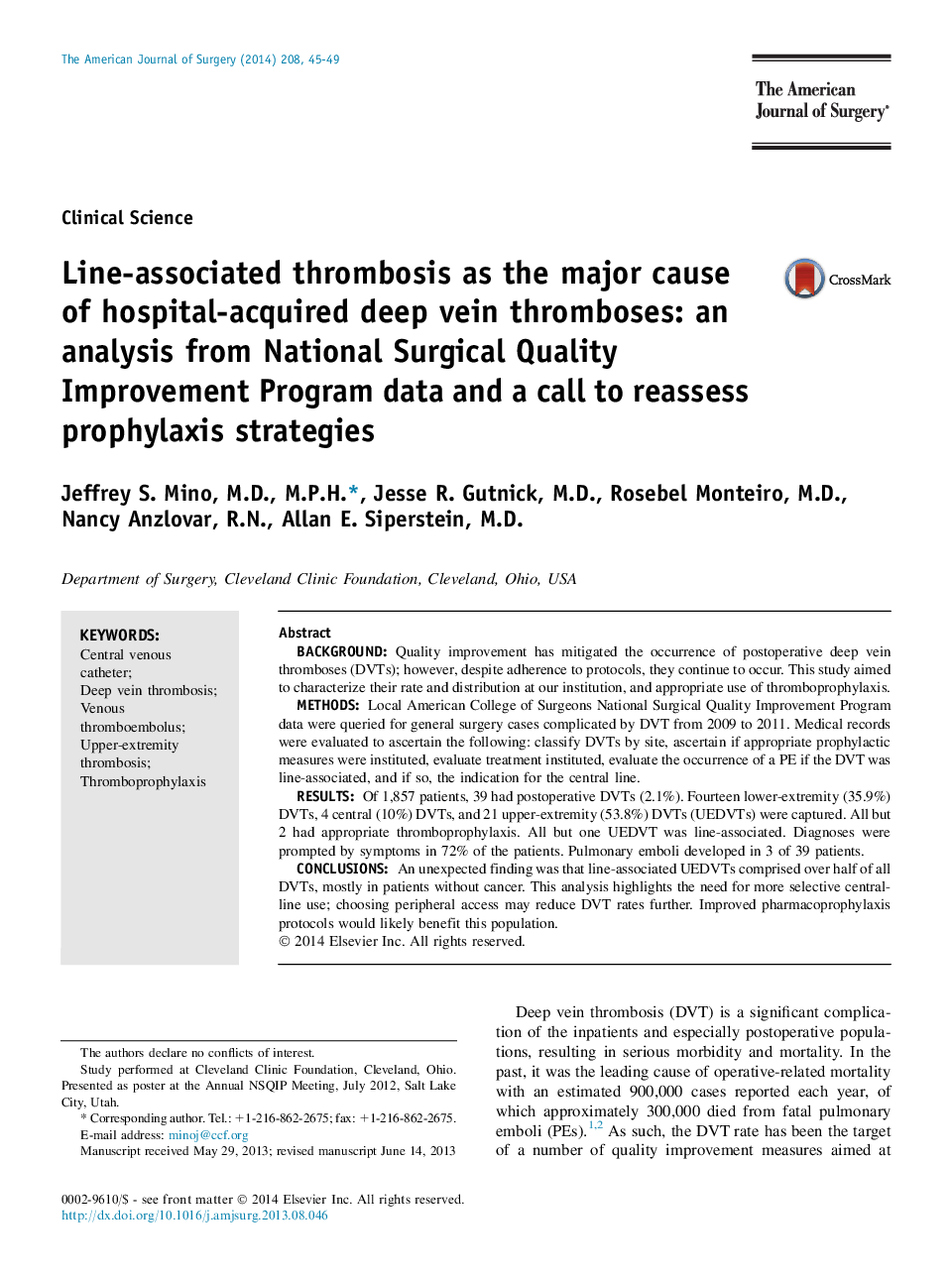| کد مقاله | کد نشریه | سال انتشار | مقاله انگلیسی | نسخه تمام متن |
|---|---|---|---|---|
| 4278664 | 1611505 | 2014 | 5 صفحه PDF | دانلود رایگان |
BackgroundQuality improvement has mitigated the occurrence of postoperative deep vein thromboses (DVTs); however, despite adherence to protocols, they continue to occur. This study aimed to characterize their rate and distribution at our institution, and appropriate use of thromboprophylaxis.MethodsLocal American College of Surgeons National Surgical Quality Improvement Program data were queried for general surgery cases complicated by DVT from 2009 to 2011. Medical records were evaluated to ascertain the following: classify DVTs by site, ascertain if appropriate prophylactic measures were instituted, evaluate treatment instituted, evaluate the occurrence of a PE if the DVT was line-associated, and if so, the indication for the central line.ResultsOf 1,857 patients, 39 had postoperative DVTs (2.1%). Fourteen lower-extremity (35.9%) DVTs, 4 central (10%) DVTs, and 21 upper-extremity (53.8%) DVTs (UEDVTs) were captured. All but 2 had appropriate thromboprophylaxis. All but one UEDVT was line-associated. Diagnoses were prompted by symptoms in 72% of the patients. Pulmonary emboli developed in 3 of 39 patients.ConclusionsAn unexpected finding was that line-associated UEDVTs comprised over half of all DVTs, mostly in patients without cancer. This analysis highlights the need for more selective central-line use; choosing peripheral access may reduce DVT rates further. Improved pharmacoprophylaxis protocols would likely benefit this population.
Journal: The American Journal of Surgery - Volume 208, Issue 1, July 2014, Pages 45–49
